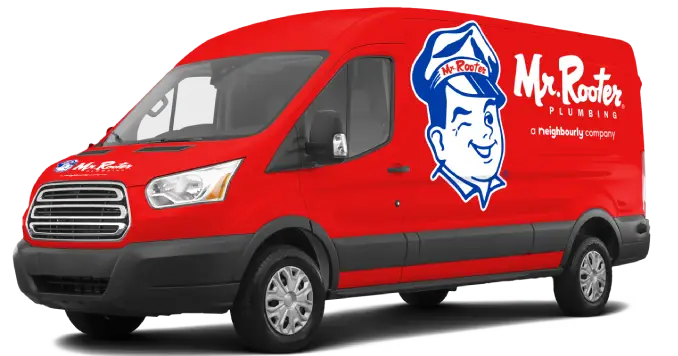
Most of the time, using a washing machine is painless. You put your clothes and detergent in, start it, and remove the clean clothes. But this time, you followed all the same steps and ended up with laundry soup. Clearly, your washing machine won't drain, but how can you fix it?
We'll share why a washing machine won't drain, how to drain top- and front-loading models, explain which tools you need, and answer frequently asked questions about this unfortunate problem.
Why Won't My Washing Machine Drain?
Supplies Needed for Manually Draining a Washing Machine
How to Manually Drain a Top-Loading Washing Machine
How to Manually Drain a Front-loading Washing Machine
Manually Draining a Washing Machine FAQs
Supplies Needed for Manually Draining a Washing Machine
To drain your washing machine, you'll need the following tools and equipment:
- Bucket (preferably 20-litre)
- Needle-nose pliers
- Plumber's snake
- Screwdriver
- Towels
- Shallow container, like a baking dish (for front-loading machines only)
- Owner's manual (optional but helpful)
How to Manually Drain a Top-Loading Washing Machine
Before trying to drain a top-loading washing machine, ensure the lid is securely closed. Top-loading washing machines will only drain and spin if the lid is completely closed (often, the lid will also lock). Try pressing the lid down firmly and see if it kickstarts the draining.
If not, follow the below steps.
Step 1: Turn off the power and lay down towels
For safety, unplug the machine. If it is hard-wired into your electrical system, switch off the appropriate circuit breaker. This will eliminate the risk of electric shock. Place towels around the washing machine to minimize mess.
Step 2: Locate the drain hose at the back of the washing machine
Pull the washer away from the wall to give yourself more space. Do this carefully to avoid yanking any hoses or wires. There are typically three color-coded hoses in the back of the machine:
- Red: Hot Water
- Blue: Cold water
- Gray: Drain hose
Turn off the water supply to the hot and cold hoses to avoid spills. Then, disconnect the drain hose from the pipe and hold it above the washing machine so water doesn't spill out.
Step 3: Drain the water
Grab your bucket, carefully lower the drain hose into it, and let gravity do the work. Once the bucket is full, reconnect the drain hose to the pipe so you can discard the water into a sink or basin. Repeat until the drum is empty.
How to Manually Drain a Front-loading Washing Machine
If you have a front-loading washing machine, follow these steps to drain it manually.
Step 1: Turn off the power and lay down towels
Unplug the machine or switch off the circuit breaker for the washing machine's outlet. Put towels down to catch any water that pours out of the drum.
Step 2: Locate the drain hose
Front-loading washers will either have a single drainpipe filter or a drainpipe filter and a separate drain hose. You can usually access either filter behind the panel on the bottom front of your machine. Check the owner's manual to find out how to open the panel. You may need a screwdriver for this step.
Step 3: Drain the water
If you only have a drain pump filter, place your shallow container up against the machine, directly under the filter, to catch the water. Turn the knob slowly until water starts coming out. Fill the container, turn the knob off, dump the water into a sink or basin, and repeat until the water has been drained completely.
If you have a drain pump filter and tube, unclip the drain tube and unscrew the end cap when you're ready to release the water. Replace the cap when you've drained all the water, and clip the hose back in place.
Step 4: Scrub the filter
Remove any visible debris from the filter. Rinse with warm water and lightly scrub the filter with a soft-bristled brush or your hand.
Why Won't My Washing Machine Drain?
In addition to learning how to drain a washing machine manually, it's helpful to understand the causes of the issue. They include:
- Clogged drain hose: If you can hear the washing machine pump working, but no water is leaving the drum, the hose is likely clogged.
- Faulty lid switch: Most washing machines require the lid to be locked to operate. If the switch signaling that the lid is closed breaks, the machine won't drain properly.
- Faulty pump: Over time, washing machine pumps can wear out. This issue will prevent the machine from draining and requires repair.
- Drain pump: If you hear the pump operating, but it sounds like it is straining, an item may be interfering with the pump mechanism.
- Blocked filter: Sometimes, a piece of clothing can block the filter. When this happens, the machine won't be able to drain.
Manually Draining a Washing Machine FAQs
What happens if you don't drain a washing machine?
When your washing machine won't drain automatically, you might consider letting it be. But there are consequences for failing to drain a full washing machine. And they can occur even if you remove the wet clothes from the machine. They include:
- Water damage: Over time, the washing machine could leak, especially if you try to use it again. This could damage your floors and walls and ruin the machine.
- Bacteria growth: Stagnant water invites mold and mildew into your home. This is especially concerning if your washing machine is in an enclosed pantry, which is common in many apartment buildings with in-unit washer/dryers.
- Foul odors: This usually results from the accumulation of mold and mildew. If you don't want your home to smell, it's crucial to drain the washing machine after every cycle, even if the machine won't do it automatically.
If your machine routinely fails to drain itself, you should consider replacing your existing unit.
Need Professional Help with Your Washing Machine? Contact Mr. Rooter
If you're unable to drain your washing machine, or it keeps failing to drain automatically, give Mr. Rooter® Plumbing a call. Let your local plumbing experts examine your washing machine and get your laundry room back to peak efficiency.

